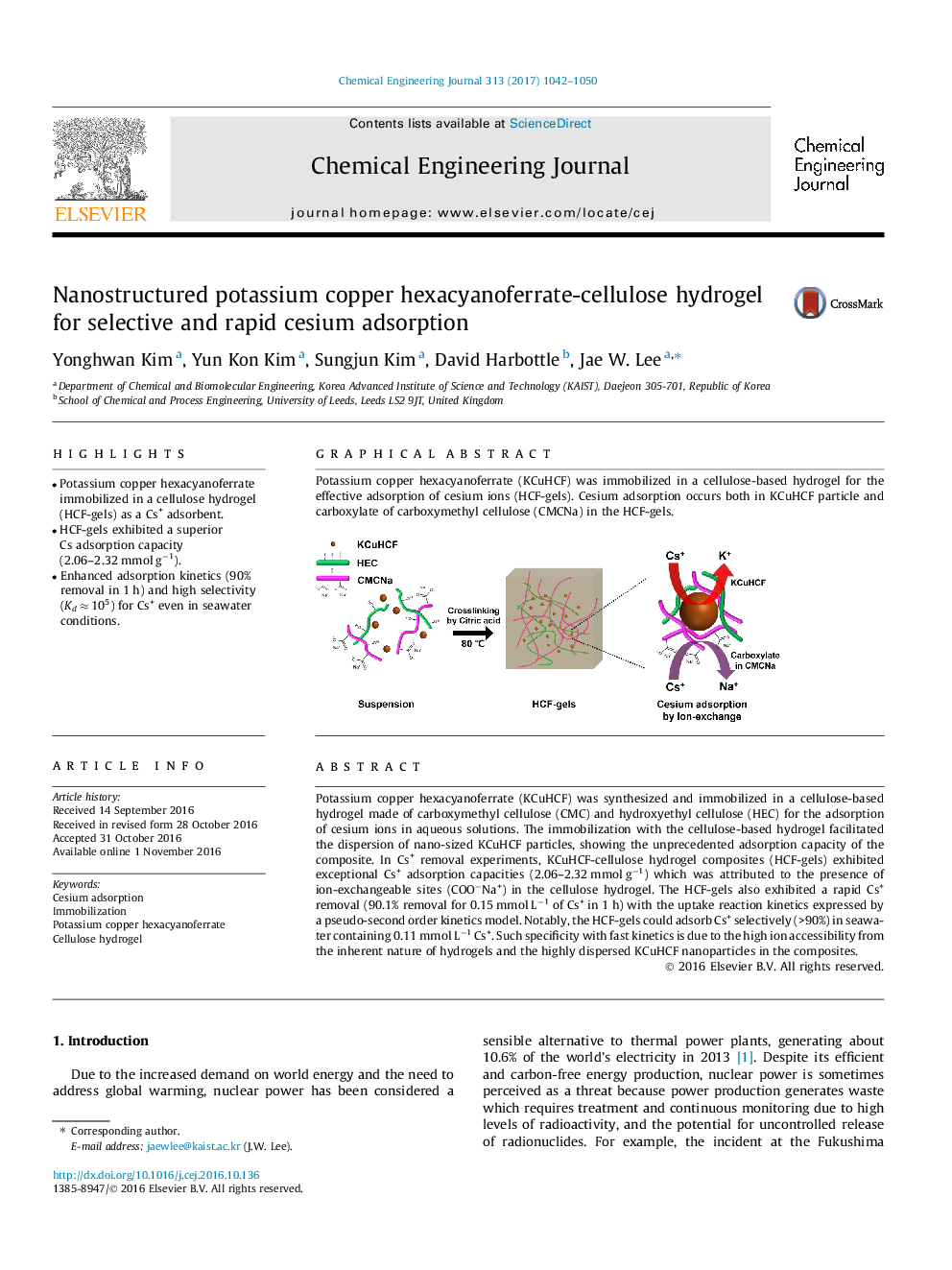| Article ID | Journal | Published Year | Pages | File Type |
|---|---|---|---|---|
| 6466660 | Chemical Engineering Journal | 2017 | 9 Pages |
â¢Potassium copper hexacyanoferrate immobilized in a cellulose hydrogel (HCF-gels) as a Cs+ adsorbent.â¢HCF-gels exhibited a superior Cs adsorption capacity (2.06-2.32 mmol gâ1).â¢Enhanced adsorption kinetics (90% removal in 1 h) and high selectivity (Kd â 105) for Cs+ even in seawater conditions.
Potassium copper hexacyanoferrate (KCuHCF) was synthesized and immobilized in a cellulose-based hydrogel made of carboxymethyl cellulose (CMC) and hydroxyethyl cellulose (HEC) for the adsorption of cesium ions in aqueous solutions. The immobilization with the cellulose-based hydrogel facilitated the dispersion of nano-sized KCuHCF particles, showing the unprecedented adsorption capacity of the composite. In Cs+ removal experiments, KCuHCF-cellulose hydrogel composites (HCF-gels) exhibited exceptional Cs+ adsorption capacities (2.06-2.32 mmol gâ1) which was attributed to the presence of ion-exchangeable sites (COOâNa+) in the cellulose hydrogel. The HCF-gels also exhibited a rapid Cs+ removal (90.1% removal for 0.15 mmol Lâ1 of Cs+ in 1 h) with the uptake reaction kinetics expressed by a pseudo-second order kinetics model. Notably, the HCF-gels could adsorb Cs+ selectively (>90%) in seawater containing 0.11 mmol Lâ1 Cs+. Such specificity with fast kinetics is due to the high ion accessibility from the inherent nature of hydrogels and the highly dispersed KCuHCF nanoparticles in the composites.
Graphical abstractPotassium copper hexacyanoferrate (KCuHCF) was immobilized in a cellulose-based hydrogel for the effective adsorption of cesium ions (HCF-gels). Cesium adsorption occurs both in KCuHCF particle and carboxylate of carboxymethyl cellulose (CMCNa) in the HCF-gels.Download high-res image (97KB)Download full-size image
